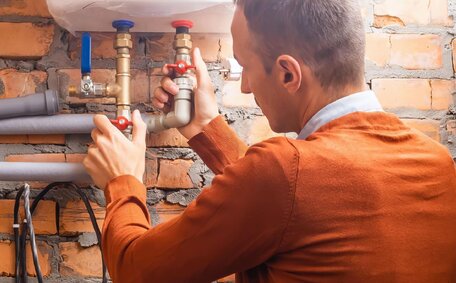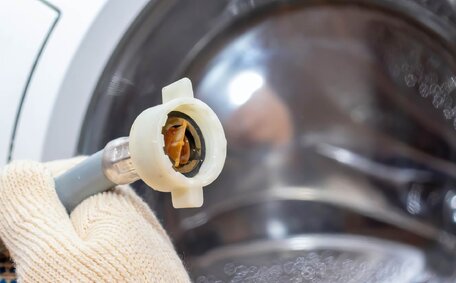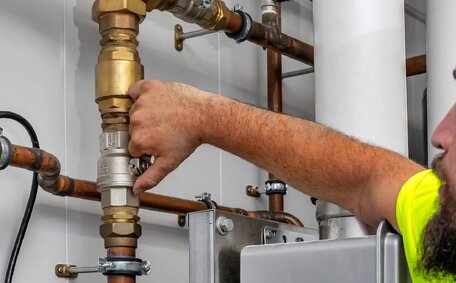Introduction to Soil and Sediment Pollution
Sediment pollution happens as soil, sediments, and particulate matter, carrying chemicals and toxins, contaminate waterways and block drains.
Activities like deforestation, agriculture, bushfires, mining, and construction can disturb soil stability. When rains descend heavily, loose soil is easily washed into stormwater systems and pipes, leading to drains becoming clogged with thick mud or sludge over time.
Urban development significantly increases sediment runoff rates, overwhelming old drainage infrastructures ill-equipped for the growing sediment volumes.
Construction zones can cause soil erosion rates up to 100 times that of undisturbed lands, resulting in tubercles—residue rings that narrow drainage channels.
Excess sediment has detrimental effects. Toxins and metals attach to sediment particles, compromising water quality and contaminating habitats.
Common Sources of Sediment Buildup
Construction Sites
Unmanaged construction sites majorly contribute to sediment pollution, with rain easily washing away stripped vegetation and bare soil.
Dirt, sand, and rubble entering local drains, creeks, or stormwater systems from construction runoff can rapidly accumulate, blocking water flows. Studies show that construction sites produce significantly more sediment runoff—100 times more than farms and 10,000 times more than forests.
Agricultural Runoff
Intensive agriculture is another key contributor to excess sediment. Practices such as tilling soil weaken its structure, and livestock grazing erodes the protective plant layer. The disruption of soil integrity leads to fine sediment becoming vulnerable to being displaced by rain and irrigation waters.
Farm runoff carries fertilisers, sediments, bacteria, and nutrients into waterways and drainage infrastructure, challenging their capacities. High sediment loads not only reduce pipe capacity but also the ability of waterways to transport sewage and runoff effectively during wet weather.
Urban Stormwater Runoff
Impenetrable surfaces like pavements and roofs prevent rainwater absorption, causing greater runoff. Instead, water can run off quickly, transporting pollutants into gutters and drains. Sediment from building sites, wear and tear of infrastructure, litter, and organic matter build up on hard surfaces between rain events.
Heavy rainfall sweeps this material into storm drains, causing urban runoff, depleting oxygen levels, and reducing pipe capacity. Overflow events then spill diluted sewage mixed with sediment into local creeks and rivers during floods.
How Sediment Causes Drain Blockages
Physical Clogging
Soil particles, including sandy grit and clay, amass in pipes and drainage systems, forming deposits that harden and reduce water flow. Sediment rings steadily reduce capacity over months or years.
Muddy globs flowing through the pipes also bind around corners and joints. This causes turbulence which then captures more particles. Leaves, litter, and debris exacerbate clogging as they stick into the sediment masses.
Toxin and Nutrient Buildup
Sediment contamination brings hazardous substances such as fuels, metals, fertilisers and animal wastes into drainage systems. These pollutants nourish microbial growths on pipe walls that thrive in dark, damp environments.
Over time, thick mats of bacteria and algae grow over sediment deposits, tapping into nutrients while secreting glues that reinforce clogs. Toxic residues can also directly kill helpful microorganisms.
Biological Impacts
High sedimentation severely impacts native species reliant on clean water. Excess turbidity smothers fish eggs and aquatic insects on riverbeds. Fish gills get damaged while water plants and bugs struggle as less sunlight penetrates.
Problematic bacterial films outcompete healthy biofilms that naturally control pathogens and odours. Sediment runoff essentially creates biological dead zones within drains.
Preventing Sediment Pollution of Drains
Sediment Control Measures
Implementing sediment control measures on sites that disturb soil is crucial for preventing drainage clogs. Perimeter sediment fences should catch runoff before entering local stormwater systems. Straw wattles and sediment logs placed along contours slow flows across bare ground. Purpose-built sediment traps and tanks help capture eroded soils.
Maintenance is vital so controls keep working properly, even small tears or gaps render them ineffective. Sediment builds up behind fences or filters should be removed regularly so they don’t get overwhelmed after big storms. Having trained environmental managers to oversee control measures ensures correct installation and upkeep.
Drainage System Maintenance
Regular cleaning and inspection helps drainage networks cope with sediment loads. CCTV cameras pinpoint sections prone to sediment accumulation for early intervention with jetting or flushing, preventing severe blockages. Removing built-up debris restores hydraulic capacity and biological functioning.
Strategically placed silt socks and bags act as protective barriers in pits and pipe inlets, with the collected deposits routinely emptied to maintain effectiveness.
Adapting Land Management Practises
Cover crops protect soil integrity on farms when rotating seasons. No-till agriculture practise prevents unnecessary ploughing and erosion.
Construction sites should phase earthworks to minimise exposed areas. Revegetating completed sections stabilises the soil. Employing porous materials and water-sensitive designs in urban areas reduces the runoff that transports sediment into storm drains.
Professional Drain Cleaning Services
Indicators Requiring Professional Drain Cleaning
Minor drain issues may be handled with household methods, but severe blockages require professional equipment and expertise. Signs that signal when specialist plumbing services may be required include:
- Water stagnating around drains or backing up in pipes
- Strong foul odours emanating from drainage systems
- Multiple plumbing fixtures affected simultaneously
- Previous cleaning attempts provided only temporary relief
- CCTV inspection reveals major buildup or pipe damage
Advanced Drain Cleaning Equipment
Saint Marys Plumbing uses advanced drain cleaning technology with customised fittings tailor-made to tackle stubborn blockages. We carry high-powered hydro jetters and flexible augers that can scour sedimented grease, soap residue, tree roots, collapsed pipes, and other debris.
CCTV drain cameras locate issues, ensuring a comprehensive cleaning process. Our dedicated vacuum truck effectively disposes of dislodged sediment and liquids. We handle the full spectrum of residential or commercial drain issues.
Trusted Local Plumbing Experts
Our experienced team with advanced certifications delivers efficient, clear-cut services that return your drainage systems to peak condition. As long term Saint Marys residents ourselves, we care deeply about this community.
Saint Marys Plumbing offers dependable emergency repair services throughout Sydney’s Western suburbs. Contact us if soil erosion or stormwater runoff has compromised your drainage, causing backups or overflows.
Our Sediment Removal Capabilities
Saint Marys Plumbing has the cutting-edge tools and know-how to manage sediment clogs and ensure smooth drainage for both homes and businesses in and around Sydney.
Powerful Drain Cleaning Technology
Our professional hydro jetting service blasts through built-up silt, mud, grit, and debris that gets lodged in pipes. High-pressure water jets physically scour pipe walls while vacuum extraction removes all loosened materials.
We also utilise cutting-edge CCTV pipe inspection cameras. These help identify problem areas or breaks not visible from the surface so we can strategically target cleaning efforts for superior results.
Prompt Emergency Response
Overflowing stormwater or broken water mains can swiftly flood properties with muddied water. We offer 24/7 plumbing services to promptly address emergencies and prevent prolonged damage.
We’re prepared to pump out floodwaters, clear inlets, remove sediments and perform essential repairs. Rapid response assists in getting homes and businesses back to regular functioning quickly.
Ongoing Drain Maintenance
Preventative maintenance helps avoid major blockages down the track. Our plumbers advise on optimally placed silt traps, pits and filter bags to stop sediments entering your drains.
We also provide scheduled maintenance services. Regular CCTV inspections, pressure cleaning and sediment removal preserves infrastructure integrity and drainage capacity.
Rely on Saint Marys Plumbing for economical solutions to sediment control. Call 1300 349 338 or email us to discuss your needs.






